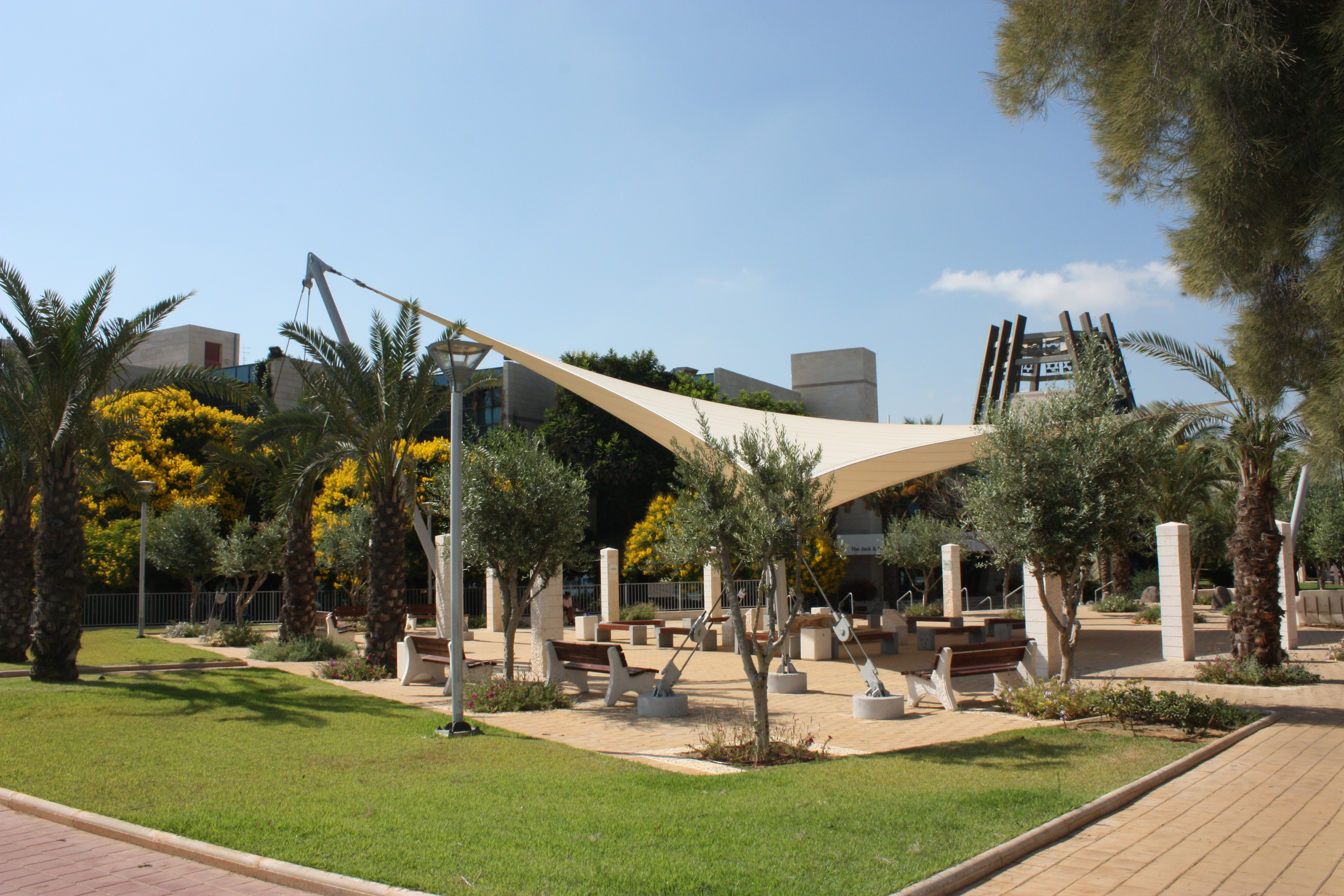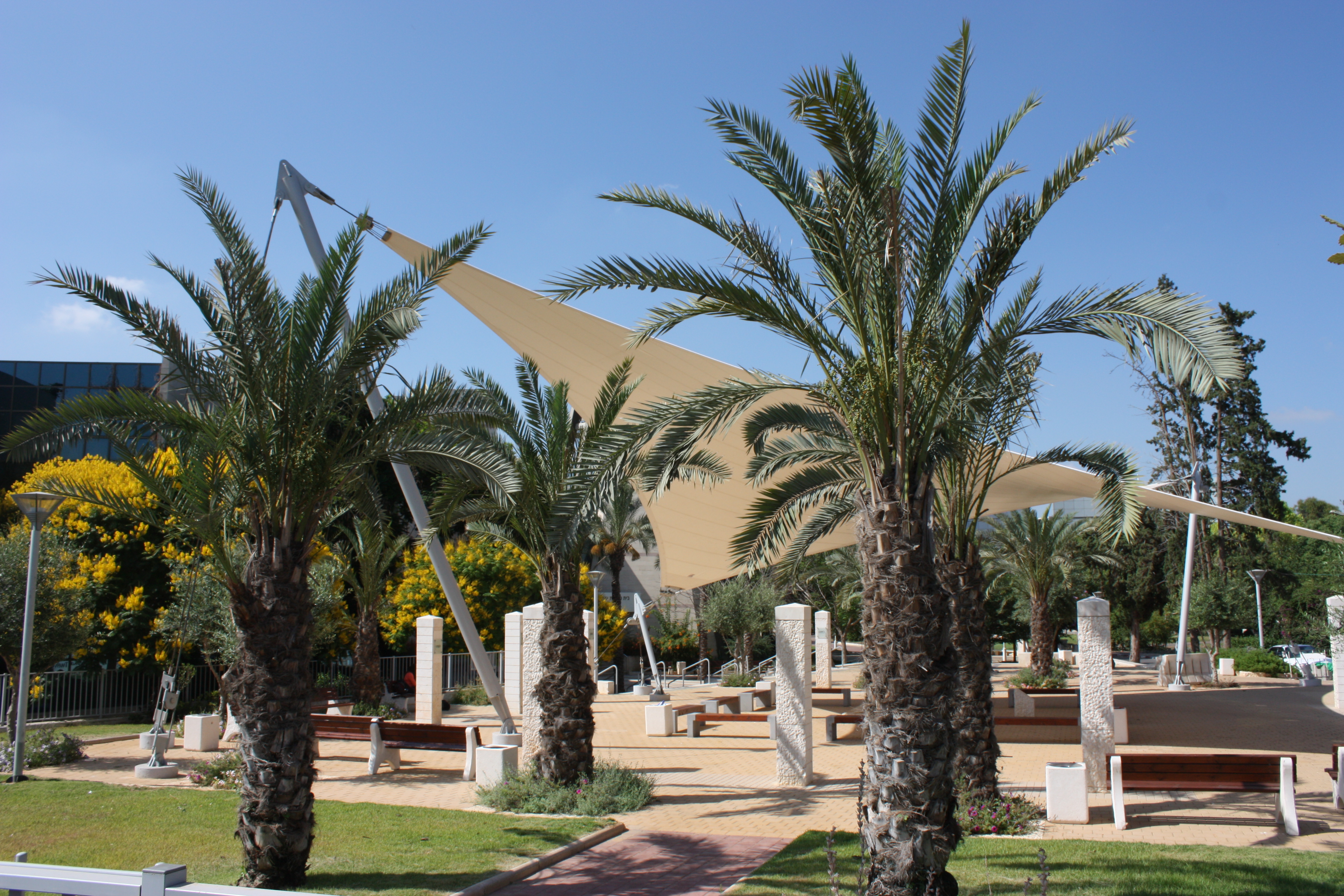The Peter and Aliki Rzepka 12 Tribes Plaza

This garden is situated in the heart of the BIU campus, adjacent to the The Lilly Shapell Central Promenade, the white route leading to the Dahan Family Unity Park. The white route’s design was inspired by the colors of the Tallit (the Jewish prayer shawl), that is mostly white, uniting all the colors within, just as the unity of the People of Israel bonds together all of the 12 tribes.
The garden is assembled from several symbolic elements routed in Jewish tradition and culture:
The order of the pillars – 12 pillars are positioned in the garden, in the same order as the 12 tribes in the desert – the camps of Judah, Issachar and Zebulun in the east. The camps of Reuben, Simeon and Gad in the south. Ephraim, Manasseh and Benjamin in the west, and Dan, Asher and Naphtali in the north. Levy and the Cohanim (the great priests) are represented by the four interior posts.
Topography – the garden is positioned on an elevated platform symbolizing the idea of “walking the plain”, but still lower from the platform of the encampment of the tribes, symbolizing the “VaYisu VaYachanu” (“And they journeyed…. And they encamped…”). The inspiration of this landscape was the revelation at Mount Sinai, symbolizing the middle road between pride and humility.
The Entries – the garden has four entries symbolizing the four corners (winds) of heaven.
The Menorah – the southern entry is designed as a seven branched menorah, with seven flames carved in stone. The menorah is constructed from stone benches facing both ways. The base of the menorah is lower than the rest of the branches, similar to the land of Canaan, symbolizing humility and subservience with which one can travel the three routes into the rest of the branches, signifying the land of Israel.
Even the greenery in the garden was specifically chosen to depict the idea of the 12 tribes in the desert, and includes palm trees, symbolizing the return to the land of Israel.
The olive trees planted on both sides of the lamp signify oil, abundance and piece, just as in the official emblem of the State of Israel. Other greenery chosen are also indigenous to Israel – herbs, pomegranate, and myrtus.

